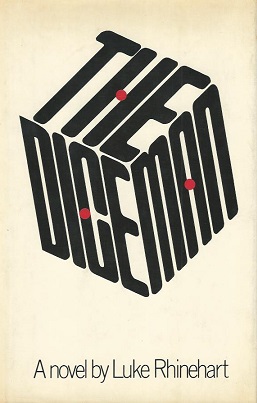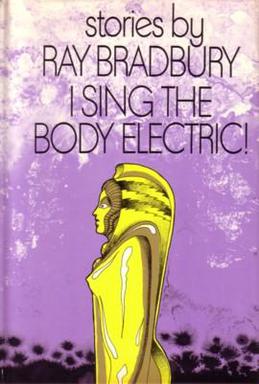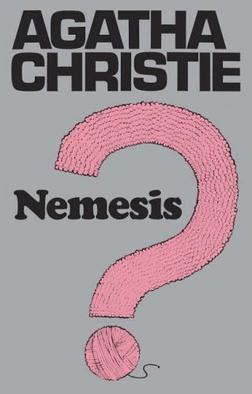
Fahrenheit 451 is a 1953 dystopian novel by American writer Ray Bradbury. It presents a future American society where books have been personified and outlawed and "firemen" burn any that are found. The novel follows in the viewpoint of Guy Montag, a fireman who soon becomes disillusioned with his role of censoring literature and destroying knowledge, eventually quitting his job and committing himself to the preservation of literary and cultural writings.

Ray Douglas Bradbury was an American author and screenwriter. One of the most celebrated 20th-century American writers, he worked in a variety of genres, including fantasy, science fiction, horror, mystery, and realistic fiction.

The Martian Chronicles is a science fiction fix-up novel, published in 1950, by American writer Ray Bradbury that chronicles the exploration and settlement of Mars, the home of indigenous Martians, by Americans leaving a troubled Earth that is eventually devastated by nuclear war.

The Illustrated Man is a 1951 collection of 18 science fiction short stories by American writer Ray Bradbury. A recurring theme throughout the stories is the conflict of the cold mechanics of technology and the psychology of people. It was nominated for the International Fantasy Award in 1952.

The Dice Man is a 1971 novel by American novelist George Cockcroft, writing under the pen name "Luke Rhinehart". The book tells the story of a psychiatrist who makes daily decisions based on the casting of a diсe. Cockcroft describes the origin of the title idea variously in interviews, once recalling a college "quirk" he and friends used to decide "what they were going to do that night" based on a die-roll, or sometimes to decide between mildly mischievous pranks. The user-generated Hitchhiker's Guide to the Galaxy website describes the novel as a book that was viewed as subversive, as having "anti-psychiatry sentiment", and as "reflecting the mood of the early 1970s in permissiveness". It has content that includes the protagonist's decisions to engage in rape and murder, and is described as having been "banned in several countries".

Guy Montag is a fictional character and the protagonist in Ray Bradbury's dystopia novel Fahrenheit 451 (1953) and its 1966 and 2018 film adaptations, as well as Bradbury's sequel video game Fahrenheit 451 (1984). He is depicted living in a futuristic town where he works as a "fireman" whose job is to burn books and the buildings they are found in.
"Here There Be Tygers" is a short story by American writer Ray Bradbury, originally published in the anthology New Tales of Space and Time in 1951. It was later collected in Bradbury's short story collections R is for Rocket and The Golden Apples of the Sun. It deals with a rocket expedition sent to a planet to see whether or not its natural resources can be harvested for the human race. They discover a paradise which seems to provide for them whatever they desire even as they think of it. They ultimately decide to leave the planet and report that it is hostile and of no benefit to humans.

Something Wicked This Way Comes is a 1962 dark fantasy novel by Ray Bradbury, and the second book in his Green Town Trilogy. It is about two 13-year-old best friends, Jim Nightshade and William Halloway, and their nightmarish experience with a traveling carnival that comes to their Midwestern home, Green Town, Illinois, on October 24. In dealing with the creepy figures of this carnival, the boys learn how to combat fear. The carnival's leader is the mysterious "Mr. Dark", who seemingly wields the power to grant the townspeople's secret desires. In reality, Dark is a malevolent being who, like the carnival, lives off the life force of those it enslaves. Mr. Dark's presence is countered by that of Will's father, Charles Halloway, the janitor of the town library, who harbors his own secret fear of growing older because he feels he is too old to be Will's dad.

I Sing the Body Electric! is a 1969 collection of short stories by Ray Bradbury. The book takes its name from an included short story of the same title, which in turn took the title from a poem by Walt Whitman published in his collection Leaves of Grass.

Nemesis is a work of detective fiction by Agatha Christie (1890–1976) and first published in the UK by the Collins Crime Club in November 1971 and in the US by Dodd, Mead and Company later in the same year. The UK edition retailed at £1.50 and the US edition at $6.95. It was the last Miss Marple novel the author wrote, although Sleeping Murder was the last Miss Marple novel to be published.
"The Long Rain" is a science fiction short story by American writer Ray Bradbury. This story was originally published in 1950 - under a different title indicative of its ending - in the magazine Planet Stories, and then in the collection The Illustrated Man. The story tells of four men who have crashed on Venus, where it is always raining.

The Cat's Pajamas: Stories (2004) is a collection of short stories by Ray Bradbury. The name of its title story comes from a phrase in English meaning a sought after and fancy thing. Another collection by the same name was published in the same year by fellow science fiction author James Morrow.

The Flying Sorcerers is a humorous 1971 science fiction novel by American writers David Gerrold and Larry Niven. It was originally serialized in 1970 as The Misspelled Magishun in If magazine.

"The Fruit at the Bottom of the Bowl" is a short story by Ray Bradbury. It was first published in Detective Book Magazine in November 1948 as "Touch and Go". The story was re-titled and published as "The Fruit at the Bottom of the Bowl" in EQMM in January 1953.
″A Clean Escape″ is a 1985 science fiction short story by American writer John Kessel. The story was first published in Isaac Asimov's Science Fiction Magazine in May 1985, and later adapted into a play by author in 1986. It features a psychiatrist attempting to cure a special patient of his amnesia. Slowly, as the patient regains his memory, more and more secrets are revealed about who this person is and the truth about their civilization as a whole.

The following is a list of works by Ray Bradbury.

"The Small Assassin" is a short story by American author Ray Bradbury. It was first published in the November, 1946 issue of Dime Mystery. It was collected in Bradbury's anthology Dark Carnival and later collected in the anthologies The October Country, The Autumn People, The Small Assassin, The Stories of Ray Bradbury, and The Vintage Bradbury.
"The Rocket" is a science fiction short story by American writer Ray Bradbury, published in 1950. It is also included in The Illustrated Man, a collection of short stories by Ray Bradbury.

A Pleasure to Burn: Fahrenheit 451 Stories is a collection of short stories by American writer Ray Bradbury, first published August 17, 2010. A companion to novel Fahrenheit 451, it was later released under the Harper Perennial imprint of HarperCollins publishing was in 2011.

Christian Scheider is an American writer, filmmaker, actor and stage artist.
















